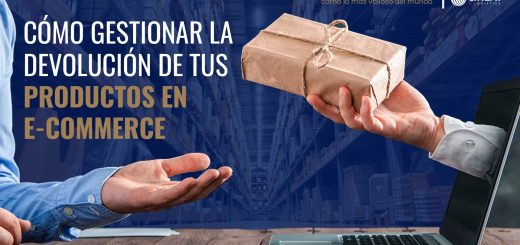Cost-Effective Craft Supply Importation: How European & North American Artisans Save Big Shipping from China
Introduction
For artisans and small businesses in Europe and North America, sourcing high-quality craft supplies at affordable prices often means looking beyond local markets. China has become a global hub for artisanal materials, offering everything from specialty textiles and ceramics to intricate beads and tools. However, individual shipping costs and logistical challenges can deter creators. Enter consolidated shipping—a smart solution that lets artists group purchases into shared shipments, slashing costs by up to 70%. This guide explores how European and North American makers can leverage cost-effective consolidation to import craft supplies from China without breaking the bank.
Why China for Craft Supplies? Unbeatable Quality, Variety, and Price
- Unmatched Product Range:
- China’s manufacturing ecosystem offers access to niche materials (e.g., rare semi-precious stones, custom-dyed yarns, or hand-carved stamps) that are hard to find locally.
- Platforms like Alibaba, AliExpress, and Taobao host millions of suppliers catering to specific craft niches.
- Price Advantages:
- Mass production keeps costs low for bulk items like beads, findings, or packaging materials.
- Even small orders benefit from China’s competitive labor and material costs.
- Customization Options:
- Many Chinese suppliers offer OEM services, allowing artisans to request custom colors, sizes, or branding—perfect for unique product lines.
Case Study: A Scottish jewelry designer reduced material costs by 60% by sourcing semi-precious gemstones directly from a Shenzhen supplier instead of local wholesalers.
The Challenge: High Individual Shipping Costs
While product prices are low, shipping single packages internationally can be prohibitive:
- Example: A 5kg parcel shipped via DHL Express from China to the U.S. costs ~150,whilethesameweightshippedviaconsolidatedseafreightcosts150,whilethesameweightshippedviaconsolidatedseafreightcosts 30.
- Solution: Consolidation pools multiple orders into one shipment, reducing per-package expenses.
How Consolidated Shipping Works
- Step 1: Shop Across Multiple Suppliers
- Use platforms like AliExpress, DHgate, or direct supplier websites.
- Avoid rush shipping; prioritize standard shipping to a Chinese warehouse.
- Step 2: Send Packages to a Consolidation Center
- The consolidator receives your parcels, inspects them for quality/damage, and combines them into one shipment.
- Some centers repack items to reduce volume and weight.
- Step 3: Choose Your Shipping Method
- Economy (Sea Freight): Takes 4–8 weeks but costs ~$2–5/kg. Best for non-urgent, lightweight items.
- Express (Air Freight): Faster (5–12 days) but pricier (~$6–10/kg). Ideal for time-sensitive orders.
- Step 4: Clear Customs Efficiently
- Reputable consolidators handle customs documentation (HS codes, invoices) to avoid delays.
- Duties/taxes depend on your country; some consolidators pre-calculate fees.
Key Tip: Aim for shipments of 50–100kg to maximize cost savings.
Choosing the Right Consolidation Service
Not all consolidators are equal. Prioritize providers with:
- Transparent Pricing: No hidden fees for inspection, repackaging, or storage.
- Global Coverage: Check if they ship to your country (e.g., Germany, Canada, Australia).
- Tracking & Insurance: Real-time updates and compensation for lost/damaged goods.
- Language Support: English-speaking staff or multilingual customer service.
Top Consolidators for Craft Supplies:
- MyUS: U.S.-based with warehouses near major Chinese cities.
- ShipHero: EU-focused, specializes in small business shipments.
- Parcel Monkey: Affordable sea freight for Canadian artisans.
- China Consolidation: UK-friendly with VAT-inclusive pricing.
Maximizing Savings: Pro Tips
- Plan Bulk Orders: Coordinate with fellow artisans to split shipping costs. A Facebook group or forum can help find “shipping buddies.”
- Avoid Rush Delivery: Standard shipping takes longer but saves 50–80% vs. express.
- Optimize Packaging: Remove excess packaging, combine small items, and use flat-rate boxes.
- Time Orders Strategically: Align purchases with consolidator shipment schedules (e.g., weekly/monthly departures).
- Negotiate with Suppliers: Ask for discounts if you agree to use economy shipping.
Tax & Compliance: Navigating Regulations
- EU VAT: If your shipment exceeds €150, you’ll pay import VAT. Some consolidators pre-charge this.
- U.S. Customs: Personal shipments under $800 usually avoid duties, but commercial goods require formal entry.
- Canada: Taxes apply to shipments over CAD $20. Use a bonded carrier for smooth clearance.
- Documentation: Always declare items accurately. Mislabeling risks fines or seized goods.
Pro Tip: Hire a freight forwarder for large shipments—they handle tariffs and compliance.
Success Stories: Artisans Who Crushed Shipping Costs
- Emma, Ceramicist (Scotland):
- Saved £500/year by consolidating glazes, kiln parts, and clay. Uses a UK-based consolidator with VAT-inclusive pricing.
- Lucas, Leatherworker (Ontario, Canada):
- Groups orders with two U.S. peers, splitting 200seafreightcostsinto200seafreightcostsinto67 each. Total savings: 66%.
- Marie, Embroidery Artist (France):
- Avoids DHL by shipping via a Paris-based consolidator, paying €12/kg vs. €50/kg for express.
Common Pitfalls to Avoid
- Ignoring Weight Limits: Some air freight carriers cap packages at 30kg; exceed and face extra charges.
- Skipping Insurance: Cheap consolidators may not cover lost/damaged goods—always opt for insurance.
- Last-Minute Rush Orders: Plan ahead to align with consolidator schedules (miss the deadline, pay extra!).
- Overlooking Quality Control: Ask your consolidator to inspect items for defects before shipping.
Conclusion: Craft Smart, Ship Smarter
Importing craft supplies from China doesn’t have to mean overpaying for shipping. By leveraging consolidation, artisans in Europe and North America gain access to affordable, high-quality materials while keeping more budget for creativity. Start by researching suppliers, connecting with fellow makers, and choosing a transparent consolidator—your wallet (and next project) will thank you.

